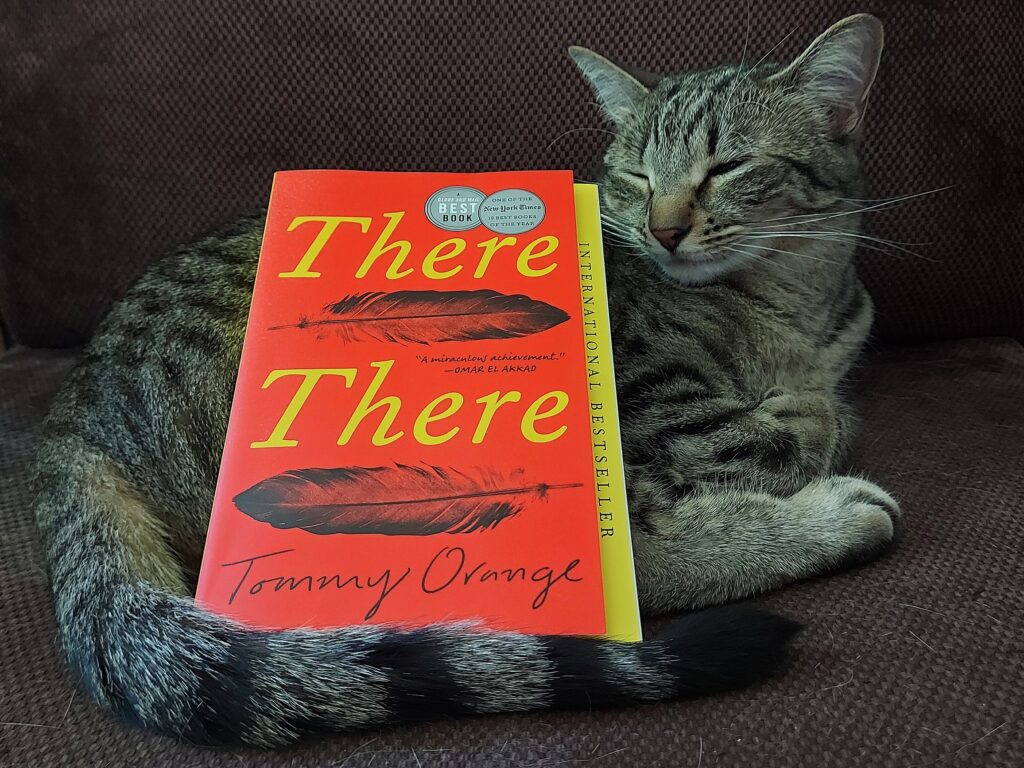There There by Tommy Orange

There There is the debut novel of Tommy Orange. Orange is a member of the Cheyenne and Arapaho Tribes of Oklahoma, and he was born and raised in Oakland, California. There There is a story about the Urban Indian and is set primarily in Oakland. It is told from the different perspectives of twelve interconnected Native American characters who are all planning on attending the Big Oakland Powwow. I think Orange did a fantastic job of creating twelve distinct and compelling characters, and I appreciate being able to read about Indigenous life in an urban setting rather than a rural setting or on a reservation.
There There takes its name from the Gertrude Stein quote in her autobiography: “there is no there there”, referring to how her hometown of Oakland is no longer the Oakland she remembers from her childhood. For Indigenous people, their home is no longer there anymore, land stolen from them by white people to be paved over and covered in tall buildings while they are forced into reservations that are fraction of the size of their ancestral land, with no running water or electricity, or forced into cities where they must acclimate to the white way of life. There There is about the trauma that Native Americans have endured at the hands of white people (the prologue is a shocking and disgusting history lesson in white people having way too much fun massacring Native Americans) and how they struggle to reclaim their identity and sense of community.
For Dene Oxendene, who is half white, reclaiming his identity means honouring his uncle’s memory by putting together a documentary of stories of Native people who live in Oakland, stories that are important to his community but no one outside of his community are interested in because they are too sad. For teenager Orvil Red Feather, reclaiming his identity means dancing at the Big Oakland Powwow, even if his great-aunt Opal does not want him to because of her own difficult childhood as a Native American.
Other characters in the novel seem to perpetrate the white person’s idea of the Indian, although their stories are not that simple. Daniel Gonzales and Octavio Gonzales are cousins who have lost family members to the drug trade and who are involved in the drug trade themselves. Daniel uses a 3-D printer to print handguns, which Octavio plans to sneak past the metal detectors at the Big Oakland Powwow in order to rob the powwow organizers of the prize money. There is an undercurrent of suspense to There There as all the characters congregate at the powwow while the reader knows that an armed robbery is going to take place.
The ending of There There is frustratingly unresolved, and the fate of every character is not known. Normally this would anger me as a reader, but I am strangely at peace with the ending and can understand Orange’s intention as the purpose of his novel is to portray the ambiguity of Native American experiences in America. I am not warning you about the ending to put you off this novel. Instead, I highly recommend There There to readers who appreciate character driven stories.